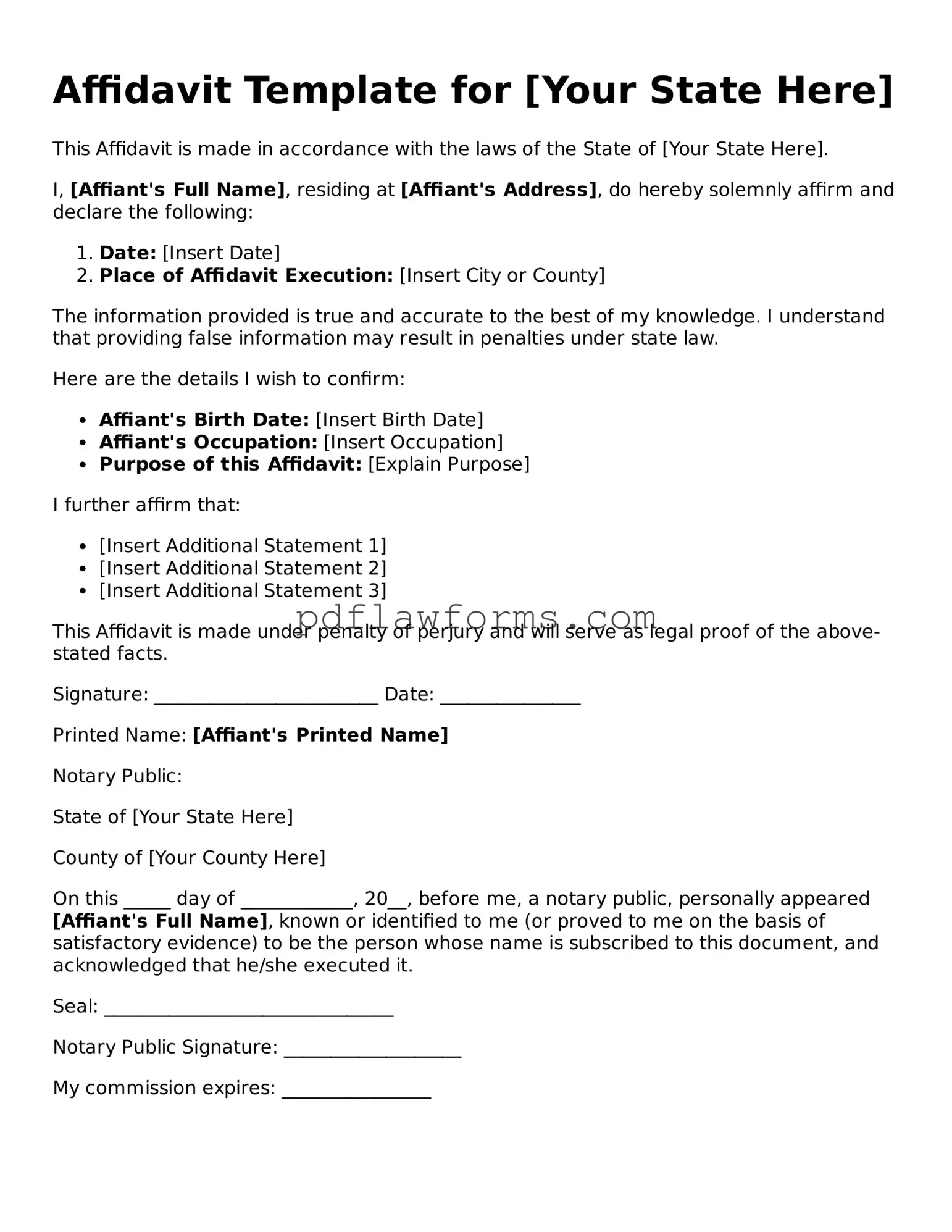An affidavit is a vital legal document that serves as a written statement of facts, sworn to be true by the individual making it, known as the affiant. This form is often utilized in various legal proceedings, including court cases, administrative hearings, and other situations where a declaration of truth is required. Key aspects of an affidavit include its structure, which typically consists of an introductory statement, a series of factual assertions, and a concluding statement where the affiant affirms the truthfulness of the content. Additionally, an affidavit must be notarized or witnessed to ensure its authenticity, providing a layer of credibility. The form can cover a wide range of topics, from personal statements to financial disclosures, making it a versatile tool in legal contexts. Understanding how to properly complete and submit an affidavit is crucial, as errors or omissions can lead to legal complications or undermine the document's validity.
